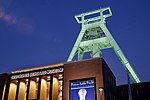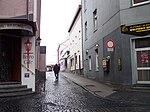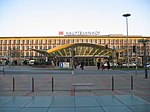German Mining Museum

The German Mining Museum in Bochum (German: Deutsches Bergbau-Museum Bochum) or DBM is one of the most visited museums in Germany with around 365,700 visitors per year (2012). It is the largest mining museum in the world, and a renowned research establishment for mining history. Above-ground exhibitions, and a faithfully reconstructed show mine below the museum terrain give visitors insights into the world of mining. The main areas of research by the scientists are the History and Technology of Mining (Geschichte und Technik des Montanwesens), and the Documentation and Conservation of Cultural Artefacts (Dokumentation und Schutz von Kulturgut). As a research institute, the museum is a member of the Gottfried Wilhelm Leibniz Scientific Community.
Excerpt from the Wikipedia article German Mining Museum (License: CC BY-SA 3.0, Authors, Images).German Mining Museum
Am Bergbaumuseum, Bochum Innenstadt
Geographical coordinates (GPS) Address Phone number Website External links Nearby Places Show on map
Geographical coordinates (GPS)
| Latitude | Longitude |
|---|---|
| N 51.489166666667 ° | E 7.2172222222222 ° |
Address
Deutsches Bergbau-Museum
Am Bergbaumuseum 28
44791 Bochum, Innenstadt
North Rhine-Westphalia, Germany
Open on Google Maps










